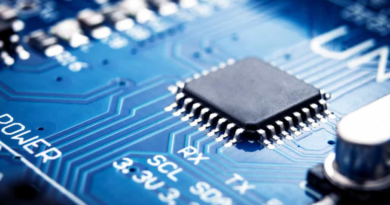Is Nvidia Going to Crash in the Second Half of 2024? History Weighs in and Offers a Big Clue – The Motley Fool
Founded in 1993, The Motley Fool is a financial services company dedicated to making the world smarter, happier, and richer. The Motley Fool reaches millions of people every month through our premium investing solutions, free guidance and market analysis on Fool.com, top-rated podcasts, and non-profit The Motley Fool Foundation.
Founded in 1993, The Motley Fool is a financial services company dedicated to making the world smarter, happier, and richer. The Motley Fool reaches millions of people every month through our premium investing solutions, free guidance and market analysis on Fool.com, top-rated podcasts, and non-profit The Motley Fool Foundation.
You’re reading a free article with opinions that may differ from The Motley Fool’s Premium Investing Services. Become a Motley Fool member today to get instant access to our top analyst recommendations, in-depth research, investing resources, and more. Learn More
The road ahead is likely to get bumpier for the world's leading artificial intelligence (AI) company.
Unless you’ve been living under a rock for the last year, you’ve probably noticed that the bulls are running wild on Wall Street. While a resilient U.S. economy has certainly played a role, the lion’s share of the gains in the growth-focused Nasdaq Composite and benchmark S&P 500 can be attributed to the artificial intelligence (AI) revolution.
In simple terms, AI uses software and systems for tasks that humans would normally oversee or undertake. What makes AI special and gives the technology such wide-ranging utility is the ability of these systems to learn over time without human intervention. This can allow AI software and systems to become more proficient at tasks and perhaps even evolve to learn new skill sets.
Image source: Getty Images.
The broad-reaching appeal of AI excited the analysts at PricewaterhouseCoopers (PwC) enough for them to estimate that this innovative technology could add $15.7 trillion to the global economy by 2030. With dollar figures this large, there’s room for multiple big-time winners.
For the time being, no company is more directly associated with the rise of AI than semiconductor colossus Nvidia (NVDA -0.36%).
The $64,000 question is: Can Nvidia keep the good times rolling, or is a potential crash around the corner?
For a very brief period this month, Nvidia pulled the crown away from Microsoft and Apple to become the most valuable publicly traded company. That’s no small feat when you realize that Nvidia’s market cap stood at less than $360 billion when the curtain opened for 2023.
Pretty much the entirety of Nvidia’s $3 trillion increase in market cap over the last 18 months and its recent need to complete a 10-for-1 stock split have been fueled by the popularity of its AI-focused graphics processing units (GPUs). In particular, the company’s H100 GPUs have become the go-to chip for businesses looking to run generative AI solutions and train large language models in high-compute data centers. In terms of computability, Nvidia’s chips haven’t been surpassed.
On top of its first-mover advantages, Nvidia counts many of the country’s most influential businesses as its top customers. Microsoft, Meta Platforms, Amazon, and Alphabet account for around 40% of Nvidia’s net sales. It’s a testament to Nvidia that leading tech companies are lining up to use its GPUs in their AI-accelerated data centers.
We’re also talking about a company that’s enjoyed otherworldly pricing power for its chips. Even with leading chip fabrication company Taiwan Semiconductor Manufacturing substantially increasing its chip-on-wafer-on-substrate capacity, which is needed for the packaging of high-bandwidth memory, Nvidia isn’t close to meeting enterprise demand for its GPUs. Higher prices lifted its adjusted gross margin to a jaw-dropping 78.4% in the fiscal first quarter (ended April 28).
The cherry on Nvidia’s sundae is that it’s held onto its innovative advantages. With external competitors like Intel and Advanced Micro Devices aiming to go head-to-head with the H100, Nvidia is readying to roll out its next-generation AI GPU architecture known as Blackwell.
Image source: Getty Images.
On paper, Nvidia can seemingly do no wrong. Wall Street’s AI leader has blown past every revenue and profit forecast put in front of it for more than a year. Yet, despite this outperformance and blueprint scaling we’ve witnessed, the possibility of Nvidia’s stock crashing in the second half of the year is within the potential range of outcomes over the next six months.
History is the single biggest factor suggesting Nvidia has a non-zero chance of crashing in the latter half of the year. Specifically, I’m talking about the history of next-big-thing innovations/technologies and valuation-based history.
Roughly three decades ago, the proliferation of the internet began changing corporate America’s long-term growth arc. While there’s no denying the internet was a game-changing innovation for businesses, it took time for this technology to mature and for businesses to figure out how they’d use direct-to-consumer channels to generate sales and profits.
Every next-big-thing innovation, technology, and trend that’s come along since the internet has featured plenty of hype, big dollar figures, and a bubble-bursting event in its early stages. Whether we’re talking about genome decoding, China stocks, nanotechnology, U.S. housing, 3D printing, cannabis stocks, blockchain technology, the metaverse, or the internet revolution of the mid-1990s, history conclusively shows us that all new trends and technologies need time to mature. Artificial intelligence is unlikely to be the exception to this unwritten rule.
Although Wall Street’s leading businesses have no qualms about spending big on hardware for high-compute data centers, most companies lack a concrete plan as to how they’re going to lean on AI to grow their sales and profits. This is consistent with previous next-big-thing innovations over the prior three decades and provides further evidence for why early-stage bubbles have occurred.
CSCO PS Ratio data by YCharts. PS Ratio = price-to-sales ratio.
The other history-based issue for Nvidia has to do with its valuation. In terms of its forward-year earnings multiple and price/earnings-to-growth ratio (PEG ratio), Nvidia isn’t raising any red flags. But pull up its trailing-12-month (TTM) price-to-sales (P/S) ratio, and it’s a completely different story.
Prior to the bursting of the dot-com bubble, Cisco Systems‘ and Amazon’s TTM P/S ratios peaked in the high 30s to low 40s. Nvidia’s peak TTM P/S ratio occurred a little over a week ago at virtually the same level (about 42). While history doesn’t repeat itself to a T on Wall Street, it does have a tendency to rhyme. For market-leading businesses, Nvidia is currently in rarified (and likely unsustainable) territory.
Unfortunately, history isn’t all that accurate at pinpointing when corrections and crashes will occur. While it’s been spot-on for three decades when it comes to forecasting an eventual bubble-bursting event for next-big-thing innovations and technologies, it’s anything but a guarantee that Nvidia’s stock will crash during the second half of 2024.
While Nvidia’s AI hardware could be quite successful over the long run, and its market cap might motor considerably higher, allowing history to be the investors’ guide suggests Nvidia’s road is likely to get bumpier, at the very least, through the end of 2024.
Randi Zuckerberg, a former director of market development and spokeswoman for Facebook and sister to Meta Platforms CEO Mark Zuckerberg, is a member of The Motley Fool’s board of directors. Suzanne Frey, an executive at Alphabet, is a member of The Motley Fool’s board of directors. John Mackey, former CEO of Whole Foods Market, an Amazon subsidiary, is a member of The Motley Fool’s board of directors. Sean Williams has positions in Alphabet, Amazon, Intel, and Meta Platforms. The Motley Fool has positions in and recommends Advanced Micro Devices, Alphabet, Amazon, Apple, Cisco Systems, Meta Platforms, Microsoft, Nvidia, and Taiwan Semiconductor Manufacturing. The Motley Fool recommends Intel and recommends the following options: long January 2025 $45 calls on Intel, long January 2026 $395 calls on Microsoft, short August 2024 $35 calls on Intel, and short January 2026 $405 calls on Microsoft. The Motley Fool has a disclosure policy.
Invest better with The Motley Fool. Get stock recommendations, portfolio guidance, and more from The Motley Fool’s premium services.
Making the world smarter, happier, and richer.
© 1995 – 2024 The Motley Fool. All rights reserved.
Market data powered by Xignite and Polygon.io.

